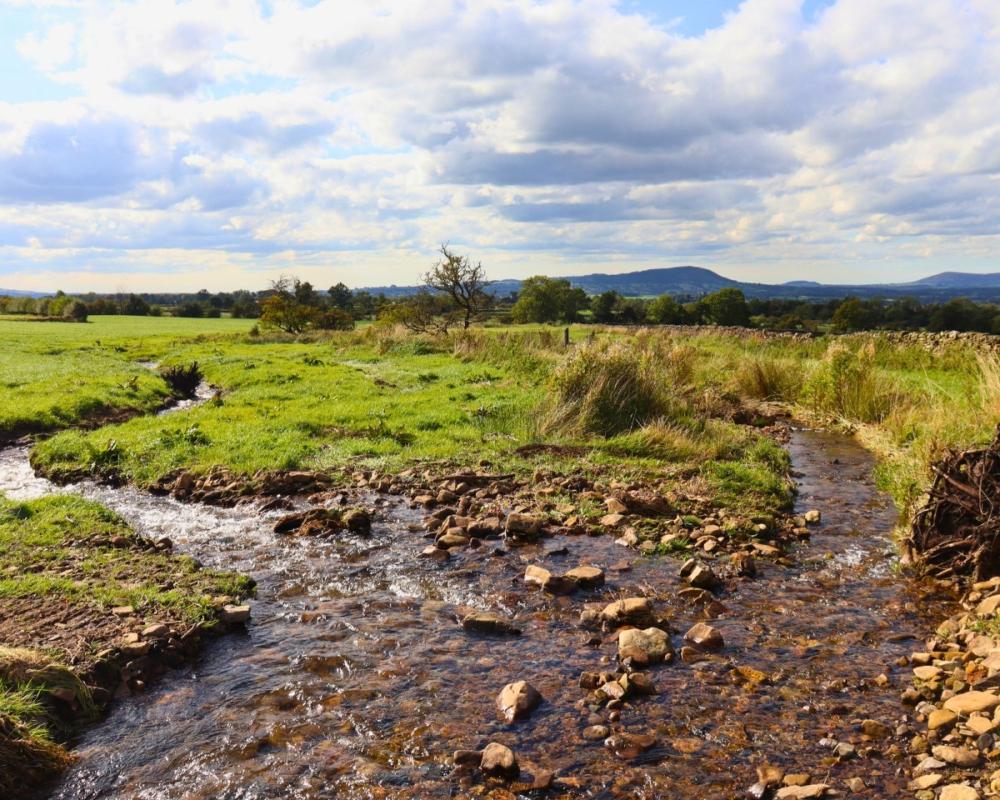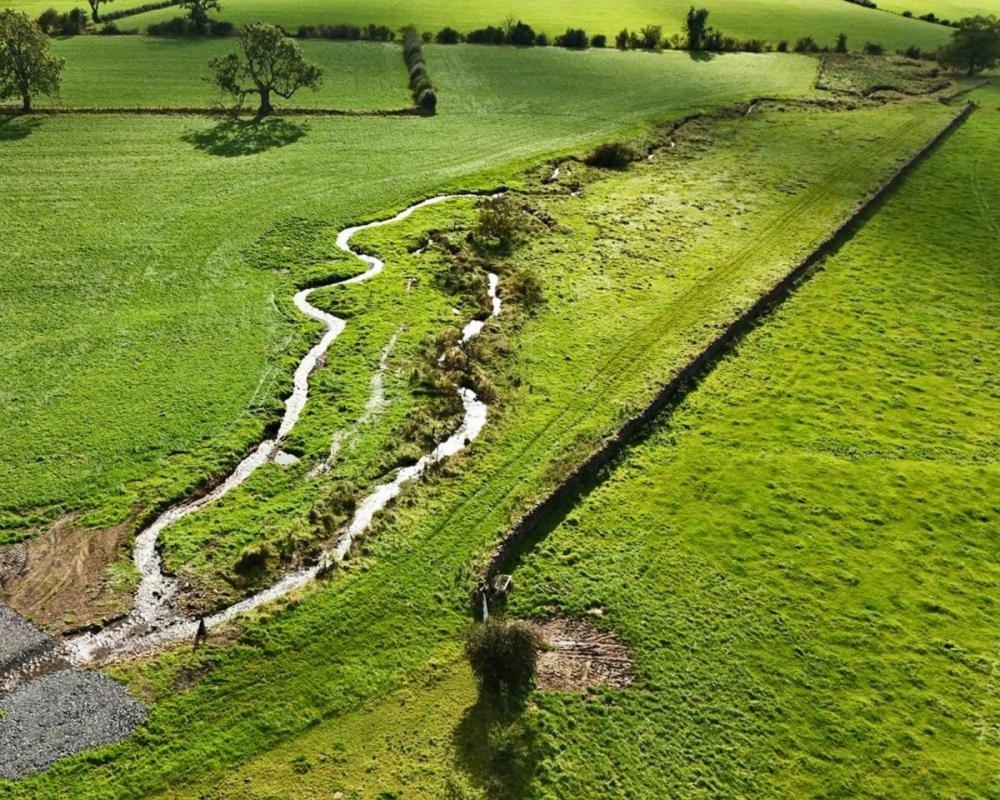search
date/time
 | Lancashire Times A Voice of the Free Press |
1:00 AM 11th November 2025
nature
Rivers Trust Harnesses The Power Of Nature To Reduce Ribble Valley Flood Risk
New natural flood management projects are helping to protect people, property, and wildlife

An aerial view of the newly created secondary channel at Little Mearley photo credits TM Lindsay Ltd
At Worston Brook, Ribble Rivers Trust has installed a series of engineered log jams, leaky dams, and brash barriers. These structures mimic the natural effects of fallen wood, creating varied habitats, encouraging the brook to interact with its floodplain more naturally, and promoting sediment distribution.
Just a few hundred metres east, on Mearley Brook, the Trust has reintroduced more leaky dams and large wood to the river, removed artificially lined riverbeds, and created backwaters and secondary channels. The addition of a new rock ramp fish easement and a wetland pond has further enhanced and connected habitats. The result is a more dynamic and diverse mosaic of habitats which will soon become home to a wider range of fish, aquatic plants, and invertebrates.
Each of these new features has its own unique benefits. The log jams, leaky dams and large wood encourage the formation of natural meanders, pools, and riffles which are vital habitats for migratory fish such as Atlantic salmon, brown trout, and European eels. The addition of a new rock ramp to remove the step drop of a man-made weir enables migratory fish to more easily access the upstream section of brook. The wetland pond and backwaters offer calm, safe, and slow-moving areas of water where fish can rest and recover as they travel upstream to their breeding grounds.
Newly planted trees and hedgerows across the sites will provide additional food and shelter for terrestrial wildlife, improving habitat connectivity between the river and surrounding landscape.

An aerial view of the newly created secondary channel at Little Mearley photo credits TM Lindsay Ltd
“These natural approaches are not only more sustainable, but they also create habitat, improve water quality, and strengthen climate resilience,” said Hannah Lederer, Project Manager from Ribble Rivers Trust. “By restoring natural processes, we’re helping to protect wildlife and our local communities from the challenges that arise due to our changing climate.”
Like all of Ribble Rivers Trust’s work, this project has been guided by science. Using tools such as flow monitors, sediment traps, and time-lapse cameras, the Trust’s Data and Evidence Team are contributing to one of the largest collections of natural flood management data in the country. This data not only informs water management locally but also contributes to a national database, helping to shape similar projects across the UK.
This project monitoring will continue over the coming months, helping to record how these projects have encouraged natural river behaviour, created new habitats, and reduced the risk of flooding.
.jpg)
A close up of one of the leaky dams at Worston
These projects have been made possible thanks to funding from the Environment Agency’s Natural Flood Management programme and the Species Survival Fund, which is administered by the Heritage Lottery Fund on behalf of Defra.